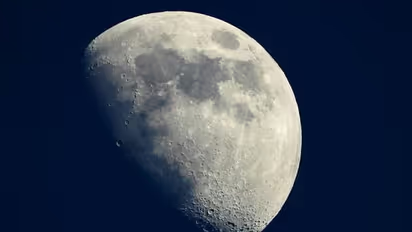Biggest supermoon of 2022 to be visible on July 13; Know time and other details

Synopsis
According to reports, the Supermoon will occur on Wednesday, marking the first time in 19 years that a "supermoon" occurs virtually concurrently with the vernal equinox. The moon will reach fullness at 9:43 p.m. ET, making it the year's final supermoon.
The biggest supermoon of 2022 is on its way. This impending space spectacle is a must-see since it will be pretty unique. For those who are unfamiliar with supermoons, this indicates that the Earth's natural satellite has reached its full lunar phase (closing its distance from Earth). When the moon enters the so-called supermoon phase, it seems bigger than normal because it is closest to the Earth. When the supermoon is visible in the sky, the sea will experience more dramatic high and low tides.
According to the most recent Space.Com forecast, the supermoon on July 13 will be the largest of 2022. It should emerge about 5:00 a.m. EDT. According to reports, the Supermoon will occur on Wednesday, marking the first time in 19 years that a "supermoon" occurs virtually concurrently with the vernal equinox. The moon will reach fullness at 9:43 p.m. ET, making it the year's final supermoon.
Also Read | World's biggest bacterium, 50 times bigger, found in Caribbean; can be visible with naked eye
According to timeanddate, the full moon is dubbed "buck moon" because antlers develop from a buck's forehead during this time of year. The Algonquin tribes named the Buck Moon after the month of July, when young buck deer show off their growing antlers. However, due of the periodic storms that occur throughout July, the July full moon has been known by numerous names, including the Thunder Moon. Whatever you name it, the approaching full moon is the largest supermoon of 2022.
According to NASA, the Moon will seem full for around three days. This craziness will begin early Tuesday morning and extend until early Friday morning.
A supermoon does not imply that the lunar object will have unique abilities; rather, it will look slightly larger and brighter than previously witnessed. This phenomena occurs when the Moon approaches Earth in its orbit, a location known as perigee. In 1979, astrologer Richard Nolle developed the phrase "supermoon," which refers to a new or full moon that happens when the Moon is within 90 percent of perigee, its closest approach to Earth.
Also Read | Webb Telescope’s 'first' images to be made public on July 12; Know when and where to check them